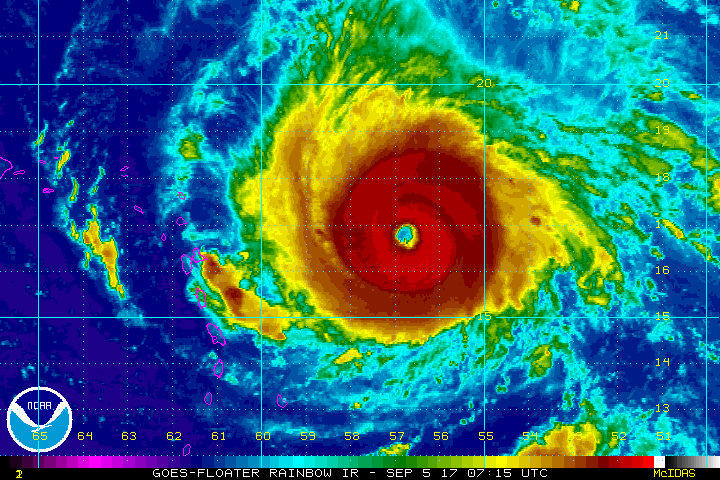
Hurricane Irma has reached “monster storm” status. As people continue to prepare for the storm, the health risks these storms can bring are often overlooked.
“In any powerful storm, like Harvey and potentially Irma, the risk of injury from falling debris is obvious. The risk of drowning in floodwaters is obvious,” says Dr. Aileen Marty, an infectious disease and disaster medicine expert at the Herbert Wertheim College of Medicine. “What is not always obvious are the hidden health risks, deadly infections and long-term consequences from hurricanes.”
Marty took part in recovery efforts after Hurricane Andrew while serving in the U.S. Navy in 1992 and again last year, as a member of the FIU-FAST (Florida Advanced Surgical Transport) team, after Hurricane Matthew struck Florida. Here are some hurricane health risks she says we all need to know and try to avoid before, during and after a storm.
Physical Injuries: Before, During, After
• Many people are injured while trying to protect their homes before the storm strikes. They fall off ladders, smash their hands with hammers and cut themselves on tools while putting up shutters.
• Flying debris can cause major injuries—don’t go out during the storm.
• Downed power lines can pose an electrocution risk during and after the storm.
• After the hurricane, floodwater includes debris that can cause cuts and other kinds of injuries. This increases the risk for tetanus (another reason to keep vaccines current during non-emergency periods.)
Infectious diseases
• Sewer lines break or overflow and fecal matter seeps into floodwaters.
• Floodwaters may contain bacteria, viruses and other nasty bugs that carry diseases.
“These other nasty bugs range from Naeglaria fowleri, the so-called brain-eating amoeba to Cyclospora, a parasite that causes terrible diarrhea,” says Marty. “Do not drink floodwater or eat food that has come in contact with it!”
Toxic chemicals
• Floodwaters may be contaminated with toxic and/or flammable chemicals that get washed out of people’s garages and tool sheds, medical debris from health care facilities, laboratories, or homes that housed ill individuals. These may cause burns, skin rashes, lung and kidney damage and other health risks.
Animals
• Flooding alters many animal populations. Snakes, lizards, rodents, alligators and fire ants have all posed a hazard in the Houston area. Escaped zoo or farm animals can be a problem.
“Some mosquito populations, like the Aedes which carries Zika and Dengue, may decrease, but others like the Culex mosquitos which transmit West Nile virus will increase!” says Marty.
Shelters
• People in close quarters in shelters are at increased risk for respiratory illnesses and diarrhea. Make sure you are up-to-date on your vaccines, especially your flu vaccine.
“Lice and scabies are a problem in confined spaces. This was a big problem in Hurricane Andrew,” says Marty.
Long-term health risks
• Chronic fungal infections and allergies can result from mold and bacteria growing on wet drywall. Removing and replacing wet drywall as soon as possible reduces this risk.
• Surviving a powerful storm can be emotionally traumatic. Some people will have to deal with chronic injuries, the loss of loved ones, pets, their home and cherished possessions. Dealing with the economic impact of the storm may be overwhelming for some people.
Hurricane season runs from June 1 to November 30. While storms cannot be prevented, risks can be anticipated and some complications avoided through good planning and an abundance of caution.






